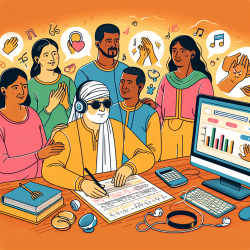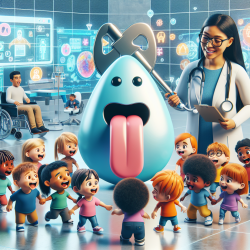Introduction
In the ever-evolving field of speech-language pathology, staying informed about the latest genetic research is crucial for enhancing therapeutic outcomes. The recent study on the LZTR1 gene's implications in Noonan Syndrome (NS) and Schwannomatosis offers valuable insights that can shape our approach to treatment. This blog delves into the findings of the research article titled "LZTR1 molecular genetic overlap with clinical implications for Noonan syndrome and schwannomatosis" and explores how practitioners can leverage this knowledge to improve their practice.
Understanding the Genetic Overlap
Noonan Syndrome is a genetic disorder characterized by developmental delays, distinctive facial features, and cardiovascular defects. The study highlights the role of LZTR1 variants in NS and their potential overlap with Schwannomatosis, a condition marked by the development of nerve sheath tumors. The research identifies a novel mutation in the LZTR1 gene, suggesting its significant role in the RAS/MAPK signaling pathway, which is crucial for cell growth and differentiation.
Clinical Implications
For practitioners, understanding the genetic underpinnings of NS can inform more targeted therapeutic interventions. The study's findings suggest that LZTR1 should be included in gene panels for NS, particularly for patients exhibiting symptoms that overlap with Schwannomatosis or Neurofibromatosis type 1. This inclusion can lead to more accurate diagnoses and tailored treatment plans.
Moreover, the identification of LZTR1 as a tumor suppressor gene involved in apoptosis and RAS ubiquitination highlights the need for comprehensive genetic testing in patients with atypical presentations of NS. Early identification of genetic variants can guide clinical management, including the monitoring of potential tumor development and the assessment of growth hormone therapy's risks and benefits.
Enhancing Therapeutic Outcomes
For speech-language pathologists, these genetic insights can enhance the understanding of the developmental challenges faced by children with NS. By recognizing the genetic factors contributing to these challenges, practitioners can develop more effective communication strategies and interventions. Additionally, collaboration with geneticists and other healthcare professionals can ensure a holistic approach to patient care.
Encouraging further research into the LZTR1 gene's role in NS and Schwannomatosis can lead to the development of new therapeutic approaches and management guidelines. Practitioners are urged to stay abreast of emerging research and consider participating in studies that explore the genetic aspects of developmental disorders.
Conclusion
The study on LZTR1's implications for Noonan Syndrome and Schwannomatosis offers a promising avenue for improving therapeutic outcomes for children with these conditions. By integrating genetic insights into clinical practice, speech-language pathologists can contribute to more personalized and effective interventions. As we continue to unravel the complexities of genetic disorders, collaboration and ongoing research will be key to unlocking the full potential of our therapeutic strategies.
To read the original research paper, please follow this link: LZTR1 molecular genetic overlap with clinical implications for Noonan syndrome and schwannomatosis.










